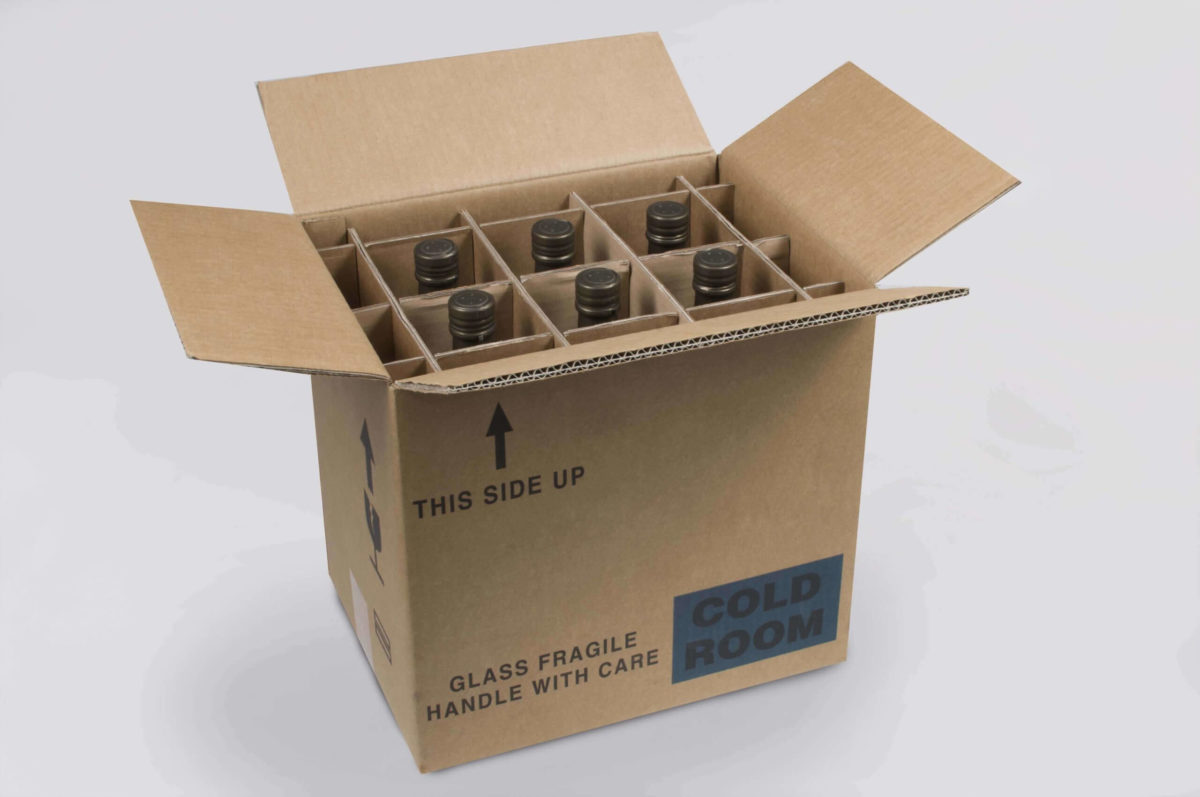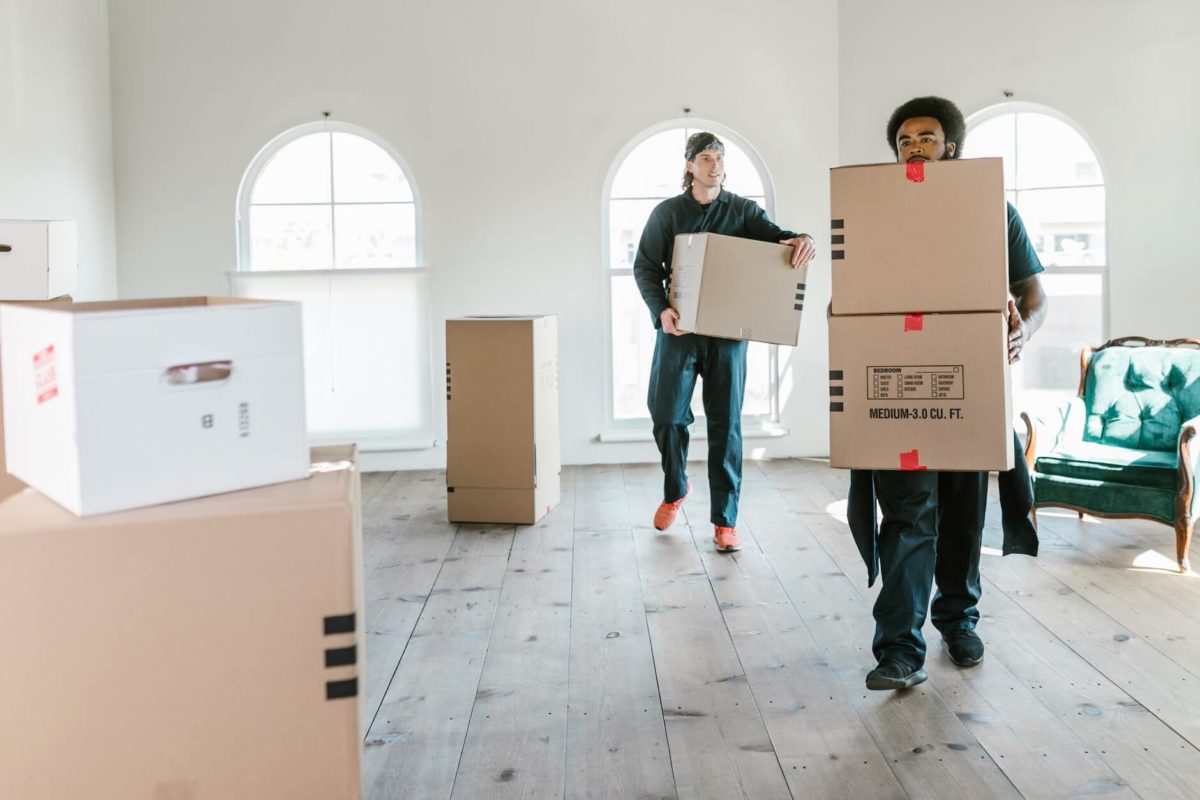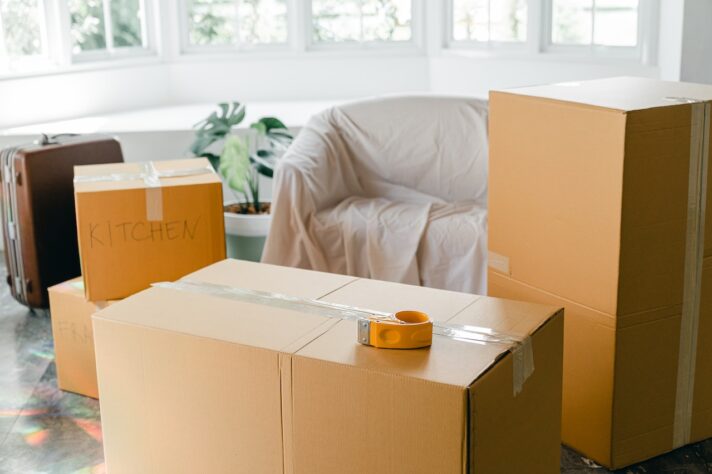Explore the ins and outs of how to pack liquids for a stress-free move, whether you’re tackling the task yourself or relying on long-distance moving services. Dive in and learn how to transform your bottles into safely packed boxes, ready for the journey ahead.
From Bottles to Boxes – How to Pack Liquids for Moving
If you’re like most people, you probably have various liquids in your home, ranging from cleaning supplies to toiletries and everything in between. When it’s time to move, figuring out how to pack liquids securely can seem impossible. But fear not because we’re here to help you navigate this tricky terrain with ease.


Gather Supplies Before You Start Packing Any Liquids or Bottles
When moving cross-country, it’s crucial to prepare and gather all the necessary supplies before you start packing any liquids or bottles. This will save you time and help ensure that your valuable items are properly protected during transit.
Different types of packing materials will be required for various items, especially when dealing with packing fragile items and packing glassware.
Start by creating a list of the supplies you’ll need for your move, including bubble wrap, packing paper, plastic wrap, heavy-duty tape, and a variety of different-sized boxes. When it comes to packing liquids, you may also want to consider acquiring leak-proof bags, waterproof labels, and absorbent pads.
Having these materials at hand will make the process of packing your liquids and fragile items much smoother and more efficient. The right supplies will help you avoid potential damage and make your cross-country move a more enjoyable experience.
Where and How to Get Various Packing Supplies
Organizing your move and ensuring you have the necessary packing supplies means knowing where and how to get these materials. To find the best-sized relocation boxes and other packing essentials, consider visiting the following locations:
- Home improvement stores – Stores like Home Depot and Lowe’s offer a wide range of packing supplies, including boxes in different sizes, packing tape, and protective materials.
- Office supply stores – Stores such as Staples and Office Depot carry packing materials that can be useful for your move, like bubble wrap, packing paper, and tape.
- Online retailers – Websites like Amazon offer an extensive selection of packing supplies, often at competitive prices. Just order in advance to ensure timely delivery.
- Freecycle and Craigslist – Keep an eye on websites like Freecycle and Craigslist for free or low-cost packing supplies. Many people who have recently moved are eager to get rid of their boxes and packing materials, so this can be a great way to save some money.
How to Pack Liquids for Shipping
Packing liquids for shipping can be a delicate task, whether you need to pack wine bottles or household cleaning supplies. Ensuring that your liquids are properly packed is essential to prevent leaks, spills, and breakages during transit.
To help you pack efficiently and securely, follow these steps.
Inspect the Containers
Before you start packing, examine all your liquid containers for any cracks or damage. Make sure that the lids or caps are tightly sealed to prevent leakage.
Use Leak-Proof Bags
Place each liquid container in a leak-proof plastic bag or wrap it with plastic wrap. This will provide an extra layer of protection in case of any leaks or spills during transit.
Cushion the Items
Wrap each liquid container with bubble wrap or packing paper to provide a protective cushion. Pay particular attention to glass containers, such as wine bottles, by using extra layers of padding.
Choose the Right-Sized Box
Select a box that is appropriately sized for your liquid items. You want to ensure that there is enough room for cushioning materials but not so much space that the items can move around during transport.
Layer the Box
Start by placing a layer of cushioning material, such as bubble wrap or crumpled packing paper, at the bottom of the box. This will create a protective base for your liquid items.
Pack Efficiently
Place the heaviest and sturdiest liquid containers at the bottom of the box, and then add the lighter and more fragile items on top. Fill any gaps with additional cushioning materials to prevent items from shifting during transit.
Seal and Label
Once all your liquids are packed in the box, add a final layer of cushioning material on top to ensure that everything is snug and secure. Close the box and seal it with heavy-duty packing tape. Label the box with a “Fragile” warning and indicate that it contains liquids. This will alert movers or shipping handlers to handle the box with extra care.
By following these steps, you can ensure that your liquids are packed safely and securely for shipping. Remember, taking the time to pack efficiently and using the proper materials will minimize the risk of leaks, spills, and breakages, making your move a smoother experience.


Use Various Techniques to Box up Your Fragile Items
When it comes to packing fragile items, employing various techniques can make all the difference in ensuring their safe transport. Consider hosting a packing party with friends or family to help you tackle the task, and use effective tips to box up your delicate items.
Firstly, it’s crucial to use the right packing materials. High-quality packing materials, such as bubble wrap, packing paper, and sturdy boxes, are essential for protecting your fragile items during the relocation process.
When you have your materials, try employing the nesting technique. For items like glassware or dishware, place smaller pieces inside larger ones, separated by packing paper or bubble wrap. This will save space and provide extra protection – but make sure the glassware isn’t delicate, such as wine glasses.
Reinforce the bottom of your boxes with extra layers of packing tape to ensure they can handle the weight of your fragile items. Keep track of all your fragile items by creating a detailed relocation inventory. This will help you stay organized and ensure that everything arrives safely at your new home.
Don’t Forget to Secure the Boxes
Securing your boxes is crucial when it comes to protecting your fragile items and liquids during the move. Learn how to use bubble wrap and other packing materials to secure your boxes effectively, and you’ll be packing royalty by the time you’re done.
When you use bubble wrap, wrap each fragile item with it, making sure to cover all sides and corners. Secure the bubble wrap with packing tape to keep it in place. Fill any empty spaces in boxes with cushioning materials to prevent items from shifting during transit.
When you’re done, simply close the box flaps and use heavy-duty packing tape to secure them. Add extra tape along the seams for added strength and protection.
Labeling Is a Must When Packing Liquids
Proper labeling is essential when packing liquids to ensure that they are handled with care during the move. You must identify the contents, use appropriate labels, and ensure movers and anyone else handling the boxes knows where they go.
When labeling, clearly indicate on each that the box contains liquids – it could be as simple as “Cleaning Supplies” or “Kitchen Liquids.”
Labels for boxes should have “Fragile” written on them. There’s packing tape with this warning, so you could wrap the box in it. You can also use stickers to emphasize which boxes contain delicate items or glass containers. This will alert movers or handlers that extra care is needed.
Mark the boxes with arrows to show which side should face up. This will help prevent leaks or spills that could damage other items in the box. Label each box with the room it belongs to in your new home. This will make the unpacking process more efficient and organized.
In the video below, you can see how post-it notes can be used for labeling and relocation. If you have spare ones lying around, now’s the time to put them to good use.
If You Don’t Have Time to Learn How to Pack Liquids for Moving, Let Professionals Handle It
When preparing for a move, you may find yourself short on time and unable to master all the tips for packing quickly. In such cases, it’s wise to consider hiring professionals to handle the packing process for you.
Every cross-country moving service specializes in packing fragile items and liquids securely, ensuring their safe transport to your new home. Not only can this save you time and effort, but it can also reduce relocation costs in the long run by minimizing the risk of damage to your belongings during transit.
With professionals taking care of your packing needs, you can focus on other aspects of your move and enjoy peace of mind knowing that your items are in good hands.
Cross-Country Movers Have the Necessary Supplies to Protect Your Fragile Items
Hiring movers can be a smart decision when planning a move, especially if you have numerous fragile items that require special care. Professional cross-country movers have access to all the necessary supplies and materials to protect your belongings.
They also have the expertise to pack your items efficiently and securely. When learning how to plan a move, it’s important to consider the benefits of working with professionals who can ensure your fragile items arrive safely at your new home.
Packing
Our expert moving teams are trained to ensure the safety of your personal belongings.
Moving Insurance
Cross Country Moving Company is the most trusted name in the relocation industry in the country.

Storage
Cross Country Moving Company is the most trusted name in auto industry in the country.
A Reputable Cross-Country Moving Company Can Help With Everything Relocation Related
Choosing a long-distance moving company that offers a comprehensive range of services can simplify your move significantly. These companies typically provide packing services, which can save you time and effort in preparing your belongings for the move.
Additionally, their experienced staff can offer guidance on the most efficient and cost-effective packing methods. Many movers charge an hourly rate for their services, making it easier to budget for your move.
In addition to packing services, reputable relocation companies can also assist with other aspects of your relocation, such as disassembling, reassembling, and moving furniture, loading and unloading the truck, and even offer temporary storage solutions if needed.
By entrusting your move to a reliable cross-country moving service, you can focus on settling into your new home while the professionals handle the logistics and heavy lifting.


With Professionals by Your Side, Liquids Will Be Safely Transported to a New Home
When packing liquids for a move, trusting professionals with the task can be a game-changer. With their expertise, experience, and access to suitable packing materials, all your stuff will be safely transported without hassle.
If you’re looking for a reliable and efficient solution for your upcoming move, consider hiring Cross Country Moving Company. Our team of experts will ship your belongings to another state, ensuring it’s securely packed and shipped without issues.
You can rest easy knowing that your possessions are in the hands of experienced professionals who understand the importance of protecting your items during transit. And when you’re satisfied with their exceptional service, don’t forget to tip movers as a token of your appreciation for their hard work and dedication.
Don’t wait any longer – reach out to Cross Country Moving Company today and let us take the stress out of your move. With our help, you can focus on the exciting journey ahead and settle into your new home with confidence and peace of mind.
Frequently Asked Questions About How to Pack Liquids
What Supplies Do I Need to Pack Liquids for a Move?
To pack liquids for a move, you’ll need various supplies, including leak-proof plastic bags, bubble wrap or packing paper, packing tape, and sturdy boxes.
How Do I Prepare Liquids for Packing?
Before packing, inspect the containers for any cracks or damage, and ensure that the lids or caps are sealed tightly to prevent leakage.
What Special Instructions Should I Follow When Packing Certain Types of Liquids?
For flammable or hazardous liquids, follow the manufacturer’s guidelines and regulations for transportation. Some items might require special handling or may not be allowed to be transported at all.
What Techniques Can I Use to Pack Liquid Items in Boxes?
Start by placing each liquid container in a leak-proof plastic bag or wrap it with plastic wrap. Then, wrap each item with bubble wrap or packing paper for cushioning. Arrange the items in the box, with heavier and sturdier items at the bottom and lighter, more fragile items on top.
How Can I Avoid Spills and Leaks When Packing Liquids?
To prevent spills and leaks, ensure that containers are sealed tightly and with their original caps, and use leak-proof bags or plastic wrap as an extra layer of protection. Ensure all bottles have their original caps, or else you risk leaving some behind.
How Do I Secure Boxes Containing Liquids to Avoid Damage During Transport?
Fill any empty spaces in your boxes with crumpled packing paper, bubble wrap, or other cushioning materials to prevent items from shifting during transit. Seal the boxes with heavy-duty packing tape and reinforce the seams for extra strength.
What Precautions Should I Take When Transporting Liquid Items?
Label boxes containing liquids with a “Fragile” warning and indicate the contents. Also, mark the boxes with arrows to show which side should face up.
How Can I Keep Liquids Safe During Transport?
Nothing much besides proper packing techniques, using the right materials, and securing your boxes will help ensure your liquids remain safe during transport. Ensure you have all this before going forward with the move.
What Should I Do if a Liquid Item Spills or Leaks During the Move?
If a spill or leak occurs, clean the affected area immediately, and assess the damage. If necessary, repack the items in a new box with extra cushioning. Remember to use plastic wrap as an added protection layer.
How Should I Unpack and Organize Liquid Items Upon Arrival?
Upon arrival, unpack your liquid items carefully, checking for any damage. Organize the items in their designated areas in your new home, and dispose of any packing materials responsibly.







